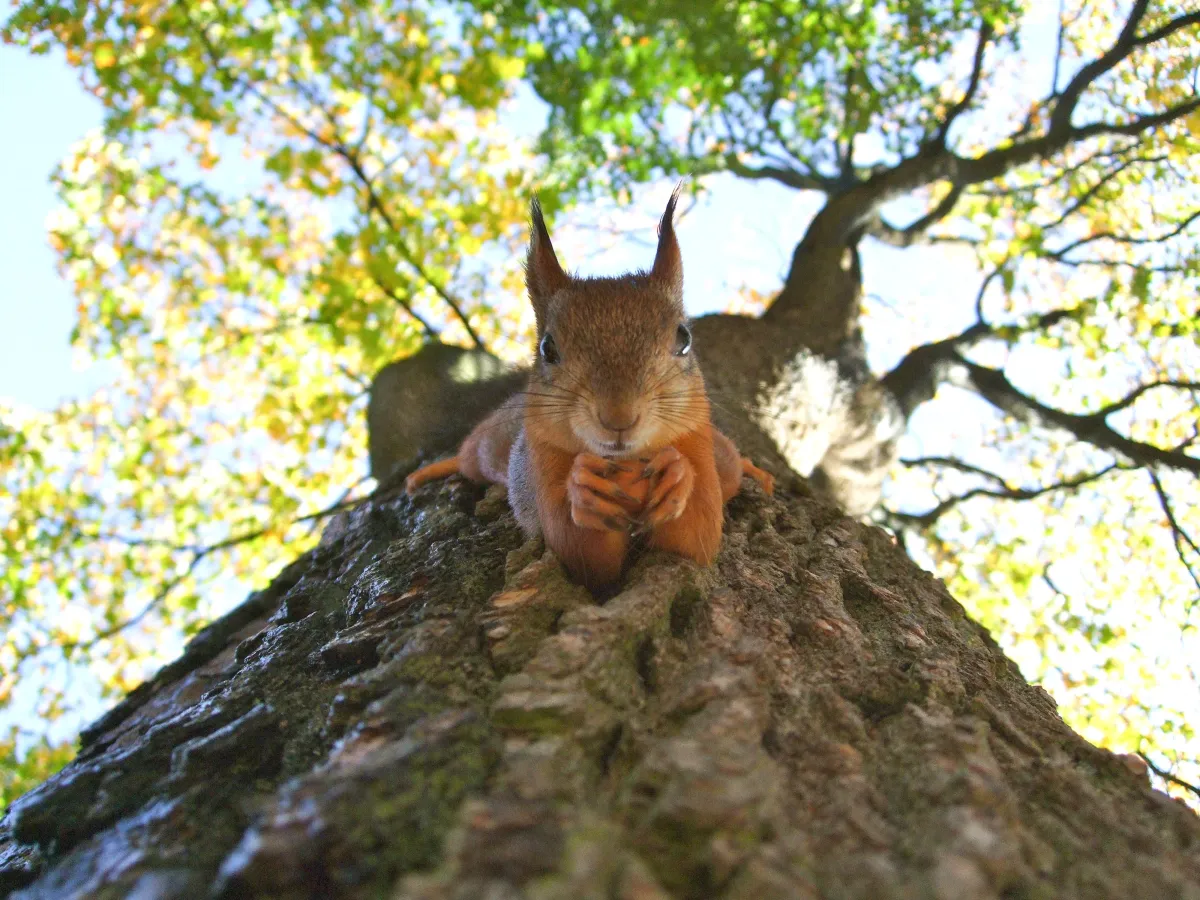Blog
Explore insightful and informative pest control blogs

The Growing Problem of Squirrels
Squirrels are one of the most commonly seen animals in city parks and other urban areas, and their numbers have been increasing significantly over the past couple of decades. In some cities, squirrel populations have reached such high levels that they are now considered to be a nuisance or pest. These animals can cause damage to buildings, gardens, and infrastructure due to their digging and chewing habits, which can become a financial burden for governments and residents alike. Furthermore, their presence can also increase the risk of disease transmission between wildlife and humans. As such, municipalities have been looking for ways to control or reduce their squirrel population numbers so as to limit these negative impacts. Potential strategies include relocation programs, trapping initiatives, and birth control measures aimed at reducing future population growth. Despite these approaches, however, it seems that squirrel numbers continue to grow in many cities around the world with no easy solution in sight.
Squirrels can be a nuisance to people and property, especially when they enter inhabited or built-up areas. They pose a danger to humans by carrying diseases such as salmonella, leptospirosis, and Lyme disease. Additionally, they can cause damage to gardens and residential properties by digging and eating plants, destroying insulation in attics and walls, chewing through wires and piping, and causing floods. In cases of severe infestations, squirrels may even attack humans if provoked or threatened. This can result in serious injuries due to their sharp claws and teeth. As well as posing a direct risk to people, squirrels also present an indirect threat in the form of other pests such as ticks being introduced into the home or garden. These pests carry diseases that can spread to humans if not dealt with properly.
Squirrels are an important part of many ecosystems. They impact other animals, plants and the environment in a variety of ways. For example, squirrels consume nuts, berries and other vegetation for food, dispersing seeds as they travel to cache the food for later use. This helps to spread new plants across the landscape. As a result, some plants rely heavily on squirrels for seed dispersal and germination. Additionally, rodents such as squirrels play an important role in the diets of various predators including owls, foxes and hawks. Squirrels also contribute to soil enrichment by burying their caches which can improve plant growth in surrounding areas. The presence of squirrels is thus essential to healthy ecosystems by providing vital food sources and habitats to many different species.

The Dangers of Squirrels
Squirrels are generally small animals and may not appear to be dangerous, however they can carry disease that is transmittable to humans. Squirrels are carriers of a variety of diseases, including tularemia, typhus, spotted fever, leptospirosis and plague. All of these diseases can be fatal if left untreated or if immediate medical attention is not obtained. Not only can squirrels cause diseases in humans, but they can also cause damage to property. They have been known to chew through wiring in buildings which can lead to fire hazards. In addition to carrying disease and damaging property, squirrels will also compete with other animals for food sources and territory; this competition may lead to aggressive behaviors displayed towards humans or other animals if the squirrel feels threatened or cornered.
Squirrels are a common animal that can be found in many areas, including urban and suburban environments. While they may provide entertainment for some with their mischievous antics, squirrels can also cause considerable damage to property if left unchecked. They are capable of chewing through wood, plastic, and other materials in order to access sheltered areas such as attics and walls. Additionally, they can damage electrical wiring which is potentially hazardous and costly. Squirrels will also dig up landscaping looking for food, leaving behind unsightly holes in the lawn or garden. Finally, squirrels can overload gutters with nesting material which prevents proper drainage from occurring. Property owners should take proactive steps to protect their home or building from the damage caused by these animals. These steps may include securing roof vents with mesh screens or trapping and removing the animals if necessary. Taking these actions will help protect against any potential problems associated with squirrel activity on your property.
Squirrels are incredibly adaptable creatures and can live in a variety of habitats ranging from suburban backyards to forested regions. Unfortunately, this ability to thrive can come at the detriment of other animals. Squirrels compete with native species for resources such as food, shelter, and nesting sites. They also consume or damage plant life that is important for providing nutrition and habitat for other animals. In addition, grey squirrels have been known to take over the nests of other birds and use them as their own. This has caused some native bird populations to decline. Squirrels can also spread disease to other wild animals including rodents, rabbits, birds and even humans if they are infected with rabies or ticks. As a result, it is important to keep an eye on any squirrel activity in your area and be aware of how their presence may be affecting local wildlife.
Preventing Squirrel Problems

To prevent a squirrel infestation, it is important to take steps to squirrel-proof your property. Make sure all exterior doors are closed and windows are screened with 1/4 inch hardware cloth or similar material. Trim tree branches away from your house’s roof and gutter systems, as this provides an easy access for squirrels to enter your home. Seal any cracks in the foundation or walls of your home with proper caulk or weather stripping. Inspect attic spaces and chimneys for signs of entry and block off any openings you find. Do not leave pet food dishes outside, as this may attract squirrels looking for a meal. Finally, make sure to store garbage securely in tightly sealed containers, as garbage may also draw these rodents near your home. Taking these preventive measures should help keep squirrels away and protect your property from an infestation.
Squirrel-proofing your home or business can help prevent damage from these pesky critters. To get started, follow these steps: 1. Inspect the exterior of your building for any potential entry points. Look for areas where squirrels may be able to squeeze through small cracks or holes in walls, chimneys, decks, or attics. Seal up any openings with a combination of caulk and mesh or sheet metal to prevent them from entering. 2. Trim back any tree branches that are close to the building, as this can provide an easy path for squirrels to gain access to your property. Make sure that there is at least a few feet between the tree and the outside wall of your building. 3. Install one-way excluder doors on entry points like chimneys and attic vents that would allow squirrels to exit but not re-enter through them when they’re done scavenging around inside of your home or business. 4. Consider installing products such as special baffles or netting over rooflines and other areas which are vulnerable to squirrel access. These items serve as physical deterrents which will keep squirrels out while still allowing air flow from below
One of the most effective ways to discourage squirrels from entering your property is to trim back trees and shrubs that are close to your home. By removing the branches and foliage that provide easy access for these animals, you can make it more difficult for them to get onto your roof or near any other area of your house. You can also install a fence around your yard, with mesh or metal wire netting along the top portion of the fence to prevent them from climbing over. Additionally, try setting up “taste-aversion” products that contain capsaicin, a bitter-tasting compound found in chili peppers. These products give squirrels an unpleasant taste sensation when they come in contact with surfaces treated with them, which will help condition them to stay away from your property. By creating barriers and using taste aversion control products, you can successfully keep squirrels away from your home and garden.

Getting Rid of Squirrels
Humanely removing squirrels can be a tricky endeavor, but it doesn't have to be. The best way to ensure that the process is as humane as possible is to first try to deter them from entering the area. This can be done by ensuring that food sources, such as bird seeds and pet food, are kept in areas where they are inaccessible to squirrels. Additionally, removing any potential nesting sites such as piles of debris or tree stumps will help discourage them from making homes in the area. If these methods do not work or if there is a particularly aggressive squirrel harassing residents and pets, then trapping is an option. Make sure that when traps are used, proper safety precautions are taken; for instance wear gloves when handling the trap so as to not leave any human scent on it. After trapping the animal, call animal control or a local wildlife rehabilitation center for assistance on how to safely transport the squirrel away from your home.
Trapping and relocating squirrels can be a beneficial solution for homeowners looking to remove nuisance wildlife from their property. It is a humane way of removing squirrels without causing them harm or having to put them down. Trapping and relocation can be done quickly, effectively, and with minimal disruption to the environment. However, there are some downsides to trapping and relocating squirrels that should also be taken into consideration. For starters, it can be difficult to find an appropriate release area for the squirrels that has the necessary resources such as food, water, cover and space. In order to successfully relocate a squirrel it must have the opportunity to establish itself in its new home. If this isn't possible then releasing animals into unsuitable habitat will only lead to their eventual demise. Additionally, when moving wild animals there is always a risk that they may transmit diseases between different populations which could have serious consequences on local wildlife dynamics. Furthermore, using live traps may not always work—squirrels can sometimes become trap shy making it difficult to catch them in future attempts; in addition bait can sometimes go unused meaning trapped animals are released without any form of control or monitoring being carried out which could potentially lead to more problems in the future.
Repellents are a type of pest control used to deter squirrels from entering or living in an area. Some repellents contain chemicals, while others use sound and light to discourage the animals. Chemical repellents like sprays, granules, and spikes can be placed around the property’s perimeter to repel the squirrels. However, these methods may require regular applications to be effective. Alternatively, sonic repellent devices emit high-frequency sound waves that irritate and disorient the animal but is inaudible to humans. There are also motion activated lights and water misters for more humane measures of squirrel removal without harming them. Finally, exclusion techniques such as mesh fencing can be used as a physical barrier to prevent access into an area. By using a combination of these different methods, you can effectively keep squirrels away from your property.

Squirrels may seem like harmless, cute animals, but they can actually cause quite a bit of damage if not properly managed. They are capable of causing electrical and structural damage by gnawing on cables and wires, destroying gardens by digging up bulbs and plants, and damaging rooftops by using them as pathways. They can also spread disease to both humans and other animals through their droppings. To manage the danger posed by squirrels, homeowners should always stay vigilant for signs of their presence. These signs can include burrows or nests around the home, damaged cables or wires that show evidence of chewing, or piles of nuts or debris in attics or other areas. If these signs appear, it is important to take quick action to remove the squirrels safely from the area. This may involve trapping the squirrels with humane traps and relocating them to a more suitable habitat away from humans and pets. In addition, sealing off any potential entry points in the home's structure is essential in order to prevent future damages and nuisances caused by squirrels entering the property again.
In order to prevent infestations and the costly treatments associated with them, it is important to take proactive measures. This starts with identifying areas that may be vulnerable to pests. Any potential access points should be sealed off, and all potential food sources need to be secured. Additionally, it is essential to clear away clutter and debris where pests can hide and breed, such as wood piles or organic waste. Regularly checking for any signs of an infestation and properly disposing of all trash are also key components in proactively avoiding pest problems. Lastly, hiring a qualified pest control specialist for regular inspections will ensure that any issues that do creep up are dealt with immediately. Taking these preventive steps can help protect your home from costly damage and put you in a better position to tackle any pest-related issues should they arise.
It is important to take steps to humanely remove squirrels if they become a nuisance. This may be necessary in the event that a home or garden becomes overrun with squirrels, posing a health or safety risk. Fortunately, there are several humane methods for squirrel removal that can be employed to get rid of these animals without harming them. Live trapping is one of the most common techniques used to capture and relocate squirrels; it involves placing traps baited with food around the affected area and then checking them regularly until the squirrel is caught. Other methods include exclusion, which involves sealing up any potential points of entry into your home and preventing further access, as well as deterrents such as noise-making devices and foul-smelling sprays, which can help to keep squirrels away from your property.
Don't let pests put a damper on your Northwest Arkansas lifestyle - Network Pest Control has the most effective, safe and environmentally friendly methods to get rid of your pest problem - fast! Contact us today for a free consultation or inspection and take back control of your home and business!
Craving a Superior Pest Control Solution?
COMPANY STORY
& EXPERIENCE
Craig Broadhead started his pest business in 2004 in California, called Pacific Pest Control. In 2021, he sold his business and moved his family to Arkansas to start fresh with a new vision of Network Pest Control. His goal it to make sure each customer has the best experience possible.


Network Pest Control
11205 Meadow Lark Rd. Rogers AR 72756
479.888.4249
